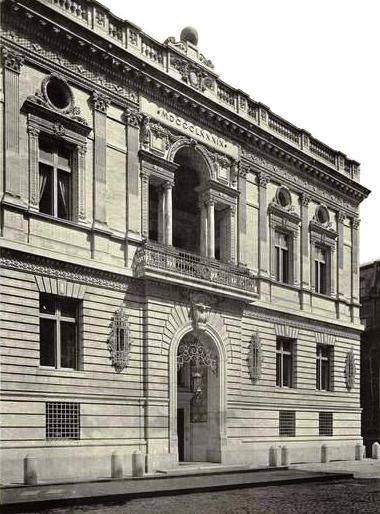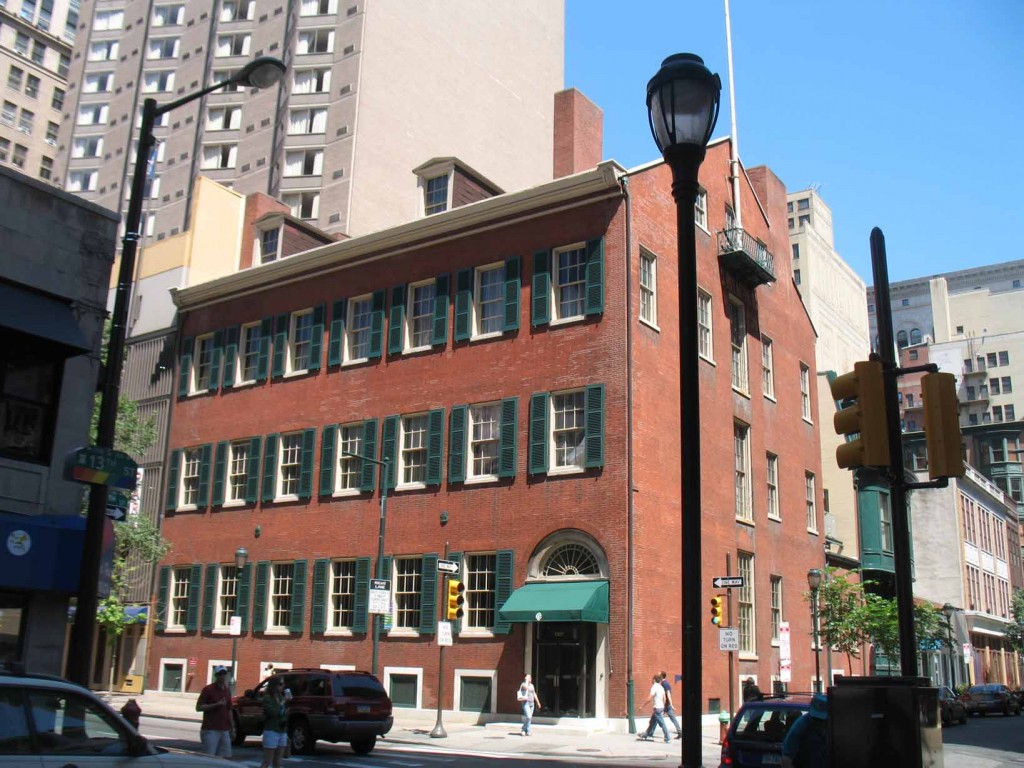“The social club in America has done a great deal to keep alive the gentleman in the courtly sense,” Dixon Wecter observes, “providing asylum from the pandemonium of commerce, the bumptiousness of democracy, and the feminism of his own household…. Every American city with a vestige of tradition has one eminently respectable men’s club.”1 But Packard emphasizes that not all clubs are equal.

Established in 1847 by William Cullen Bryant and his friends as a club to promote interest in the fine arts and literature. The Century Association Clubhouse was open to "artists, literary men, scientists, physicians, officers of the Army and Navy, members of the bench and Bar, engineers, clergymen, representatives of the Press, merchants and men of leisure."
“Every city has its elite clubs and its waiting-room clubs. In fact, there is usually a well-understood hierarchy of clubs….
“…Most of the current aristocrats or their families belonged to waiting-room clubs during their rise to power, and may or may not continue membership in them, along with their membership in the elite clubs.”2
In his classic study of the upper class in the United Sates, Digby Baltzell writes: “In most major American cities there are one or two distinguished metropolitan men’s clubs whose members dominate the social and economic life of the community.”3

James Clair Flood Mansion, also known as Pacific-Union Club, was a town house built in 1886 for James C. Flood, a 19th century silver baron. It was purchased by the Pacific-Union Club after the 1906 earthquake.
Some clubs are very old, such as the Philadelphia Club, which dates from 1834; New York’s Union and Century Clubs, founded in 1836 and 1847 respectively; the Sommerset of Boston, founded in 1851; and the Pacific Union of San Francisco, founded in 1852.
These clubs are as important for the formation of adults of the upper class as the boarding schools are for their children. Comments Domhoff:
“Just as private schools are a pervasive feature in the lives of upper-class children, so, too, are private social clubs a major point of orientation in the lives of upper-class adults. These clubs also play a role in differentiating members of the upper class from other members of society.”4

The Philadelphia Club is a gentleman's club in Philadelphia, Pennsylvania; the oldest club of its kind in the United States.
Like the schools, these clubs fulfill an important social function by placing members of elites from various parts of the country in contact with each other.
The clubs of the upper class are generally exclusive and often so closed that they pass largely unperceived by members of other classes. On this point, Mills makes the following observation:
“It is not unusual for gentlemen to belong to three or four or even more [clubs]. These clubs of the various cities are truly exclusive in the sense that they are not widely known to the middle and lower classes…. They are of and by and for the upper circles, and no other….
“To the outsider, the club to which the upper class man or woman belongs is a badge of certification of his status; to the insider, the club provides a more intimate or clan-like set of exclusive groupings which places and characterizes a man.”5
Finally, as Mills says, these clubs serve to introduce the new rich into upper class circles according to the precise cadence their assimilation demands.

The Union Club of the City of New York, commonly referred to as the Union Club, was founded in 1836. It is the oldest private club in New York City and the second oldest in the U.S., after the Philadelphia Club, which was founded in 1834.
“Membership in the right clubs assumes great social importance when the merely rich push and shove at the boundaries of society…. Clubs are important rungs in the social ladder for would-be members of the top status levels; they are status elevators for the new into the old upper classes; for men, and their sons, can be gradually advanced from one club to the next, and so, if successful, into the inner citadel of the most exclusive.”6
Members of the upper classes are not alone in seeking membership in exclusive clubs in order to maintain their character and identity. There are clubs that bring together persons of the middle classes, as Ingham notes. “Below the level of these aristocratic strongholds in each city are a series of lesser clubs which follow a fairly uniform pattern from city to city.”7
Professional associations form elites within their own spheres. Sociologist Michael Powell shows how the elitist character of the Association of the Bar of the City of New York (ABCNY) was created and maintained “as a patrician legal association with membership requirements akin to those of the upper-class clubs with which they were so familiar. Holding to patrician notions of professionalism, and generally opposed to democratic tendencies within the bar, they advocated higher entry standards.”8

The Cosmos Club is a private social club in Washington, D.C., founded by John Wesley Powell in 1878. Among its stated goals is "The advancement of its members in science, literature, and art".
Plinio Corrêa de Oliveira, Nobility and Analogous Traditional Elites in the Allocutions of Pius XII: A Theme Illuminating American Social History (York, Penn.: The American Society for the Defense of Tradition, Family, and Property, 1993), Appendix I, pp. 172-174.
1 Dixon Wecter, The Saga of American Society: A Record of Social Aspiration, 1607-1937 (New York: Charles Scribner’s Sons [1937], 1970), pp. 253, 266.
2 Vance Packard, The Status Seekers (New York: David McKay Co., 1959), pp. 179-180.
3 E. Digby Baltzell, Philadelphia Gentlemen: The Making of a National Upper Class (New York: The Free Press, 1958), p. 336.
4 G. William Domhoff, Who Rules America Now? (New York: Simon & Schuster, Inc., 1983; Touchstone, 1986), p. 28.
5 Mills, The Power Elite, p. 61.Some of these clubs are so exclusive that even persons of the upper classes have difficulty becoming members, as Cleveland Amory writes in a book on the Boston upper class: “So severe are Boston’s leading clubs that even blue bloods have had to watch their step to gain admission” (Cleveland Amory, The Proper Bostonians [New York: E. P. Dutton & Co., 1947], p. 358).
6 Mills, The Power Elite, pp. 61-62. Commenting on the social ascension of families, Warner notes: “A family often is considered to be in the top level of the upper-class group only if it has participated in this upper-class behavior for several generations. The members of the lower-upper group…achieve final acceptance as solid members of the top level only through the passage of time, often three or more generations” (Warner, American Life: Dream and Reality, pp. 116, 117).
7 John Ingham, The Iron Barons: A Social Analysis of an American Urban Elite, 1874-1965, p. 97.
8 Michael Powell, From Patrician to Professional Elite: the Transformation of the New York City Bar Association (New York: Russell Sage Foundation, 1988), p. 226. Pressured by profound cultural and social changes, the ABCNY has been forced to admit a greater variety of members since the 1960s. Its elitist character, however, persists, as Powell demonstrates.









